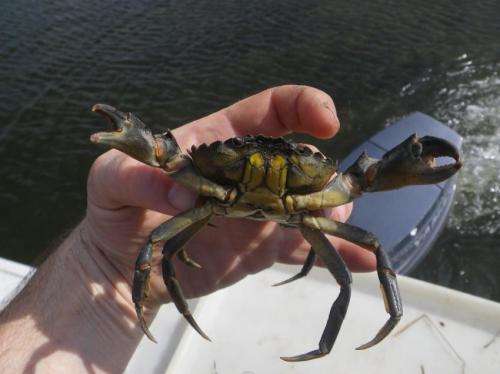New research into impact of frequency of coastal water bodies' connection to ocean

New research into the proportion of time semi-enclosed water bodies are connected to the ocean has found that the greater the connectivity, the greater the presence of the non-native crab species carcinus maenas. This finding lends itself to the management of ~90 coastal lakes and lagoons found along the New South Wales coast, and the ongoing debate on whether to artificially open them or not.
These waterways naturally spend days to years separated from the ocean by sand bars. Artificially opening sand bars, either by dredging or by building a training wall, can alleviate flooding and improve water quality by re-establishing tidal conditions. However, a new study (attached) published in Limnology and Oceanography suggests that artificially opening lakes and lagoons may render these waterways more susceptible to biological invaders.
"Our surveys of 14 southern New South Wales coastal lakes and lagoons revealed that the invasive European shore crab was absent from waterways that were disconnected from the ocean by a sand bar for more than 60% of the time," says lead author Clifford Garside from Macquarie University, "By contrast, the crab was recorded in all of the surveyed lakes and lagoons that had entrances either permanently trained open or naturally open for >40% of the time".
Each year, invasive species cost the Australian economy >$3.5 billion dollars. Although the European Shore Crab has not yet caused significant economic impacts in New South Wales, there are concerns for the oyster industry as elsewhere the crab has caused large negative impacts on shellfisheries.
"Management strategies aimed at mitigating coastal flooding and maintaining water quality by artificially opening coastal lakes and lagoons need to consider how benefits of this intervention may be offset by the cost of enhanced biological invasion." says co-author, Dr Melanie Bishop also of Macquarie University.
Provided by Macquarie University



















